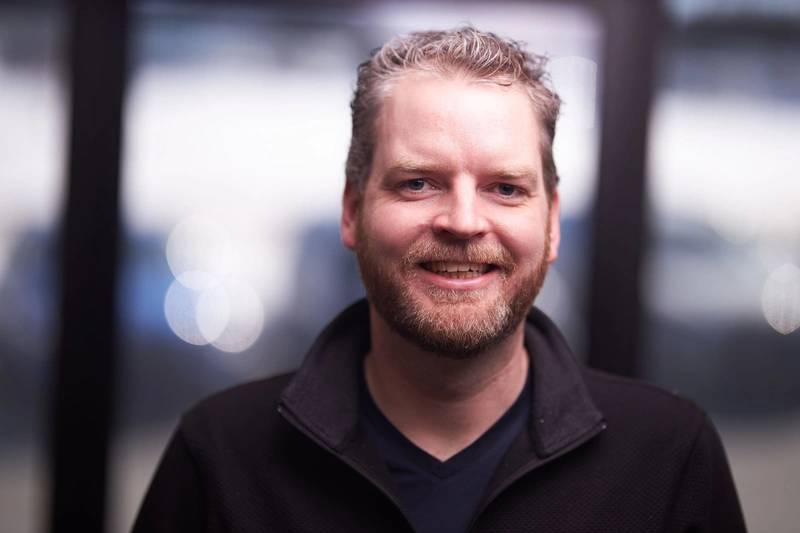The Rise of Kraken Robotics: A Journey of Innovation
Since its founding in 2012, Kraken Robotics has embodied the phrase, “Innovate or Die.” Now, entering 2024, this mantra seems to have paid off. The company has transformed from a small startup with a handful of employees into a formidable player in the marine technology sector, boasting a workforce of 250 and revenues nearing $100 million. At the helm of this innovation-driven journey is David Shea, Kraken’s Chief Technology Officer, who has been with the company from its very inception.
A Snapshot of Kraken Today
Reflecting on Kraken’s growth, David shares, "When we kicked off this venture in St. John’s, Newfoundland & Labrador, we were just a tight-knit group of six passionate individuals." Fast forward over a decade, and the company has expanded its geographical footprint with offices not only in Canada but also in Scotland, Germany, Brazil, Denmark, and the United States. The shift from a modest beginning to being publicly traded signifies a remarkable journey. In 2023, the company reported revenues of around $70 million—a stunning 70% increase from the previous year. Expectations for 2024 are even more ambitious, as Kraken aims for the $90 to $100 million mark.
Evolution of Technology
Initially, Kraken’s focus was primarily on developing sonar systems, which were integrated into existing underwater vehicles. Over time, their technological capabilities have matured significantly. Now, Kraken develops a comprehensive suite of components necessary for underwater operations, including pressure-tolerant batteries from their German facilities, advanced underwater laser scanners, and sophisticated launch and recovery systems.
One of Kraken’s standout offerings is its mine hunting solutions, which have garnered attention from NATO navies worldwide. David explains, “We have moved beyond just product delivery. Our Robotics as a Service (RaaS) model is instrumental in offering tailored solutions, especially for industries like offshore wind. Companies can call us to perform specific tasks—like pipeline surveys—without needing to buy or manage their own equipment.”
Driving Forces: Trends and Technologies
As the industry progresses, certain trends and technologies have emerged as catalysts for future growth. "SWAP—size, weight, and power—improvements are vital across the board," David reveals. The maritime sector has seen the development of larger underwater vehicles requiring substantial power and batteries, while more compact, cost-efficient designs are also gaining traction.
At the heart of Kraken Robotics’ technology is their synthetic aperture sonar, which emphasizes higher quality, resolution, extended ranges, and reduced costs. David emphasizes their commitment to educating customers on the advantages of this cutting-edge technology, which is no longer limited to expensive military applications but is becoming essential for various sectors.
The advent of artificial intelligence is another significant trend shaping the future of marine technology. "What do you do with all the data we collect?" David poses. The inclusion of AI assists in automating data processing, allowing for functionalities like automated target recognition—crucial for discerning meaningful information in vast datasets. Enhanced quality control metrics generated by AI mean that robots deployed underwater can make real-time decisions, increasing efficiency and precision.
A Spotlight on Recent Projects
Highlighting the practical application of their technologies, David recounts a recent project with a defense customer in Australia. The team operated around the clock for six months, conducting port and harbor security surveys and route mapping. “Our approach wasn’t to replace existing capabilities, but to augment them. The flexibility of our service meant that we could execute this crucial mission without the customer undergoing lengthy training or lengthy acquisition processes,” he explains.
Once the operation was complete, all equipment was returned to Kraken’s facility in Canada for maintenance, readying it for future missions, showcasing the streamlined nature of their operational model.
The Community: Nurturing Innovation
Living and working in the Newfoundland & Labrador region offers unique benefits that contribute to Kraken’s success. David comments on the reputation of amicable and collaborative people within the province. “There’s a strong sense of community; it’s the connections and relationships we build that add value,” he says. Our regional technology sector is characterized by its resilience in the face of harsh environments, particularly the challenges posed by the North Atlantic.
Canada’s vast coastline and surrounding oceans bring forth opportunities for innovative technologies to take root. “If something works off the coast of Newfoundland, it can work anywhere,” David adds, underscoring the importance of their testing environment.
Kraken Robotics is not just a company operating in isolation; it’s a testament to the power of innovation fueled by people, relationships, and a deep connection to the sea. The journey so far has laid a strong foundation, with a commitment to forging ahead, turning challenges into pathways for future success.
